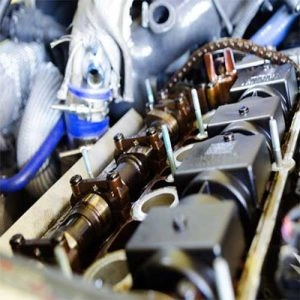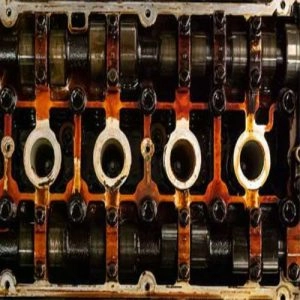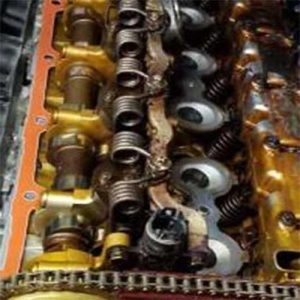The car contains several important mechanical parts, such as the valve cover, each having different roles. However, they all work collectively to ensure the ease of driving and the car's optimal operation without breakdowns, malfunctions, or sudden problems. Nevertheless, several environmental factors, such as humidity and heat, negatively impact these parts. With the usage and aging of these parts over time, they become susceptible to damage and malfunction, and may sometimes require complete maintenance or replacement. Ignoring their current condition could lead to several unwanted problems and damages.
Our discussion today is about the valve cover, which is one of the important parts in a car. We will explain some information about it, then talk about 4 significant signs indicating its damage and malfunction. Stay tuned with us.
What is the valve cover gasket?

All modern cars, and most old cars as well, contain what is called a valve cover gasket. However, it varies from one car type to another in thickness, shape, and design that the engine and car manufacturer put in place. In general, the gasket is located between the valve cover and the engine head, and it is made from plastic material such as rubber or cork, or from a metallic material, to fit with the valve cover.
There isn't an exact number of them in a car, as it varies depending on the model, type, and configuration of the vehicle. For instance, a 4 or 6-cylinder engine needs only one valve cover, while a 6 or 8-cylinder engine requires two valve covers, positioned on both sides. It should be noted that both the face of the cover and the cover itself can become prone to cracking, rusting, and wearing over time, due to the environmental factors and engine heat. Therefore, they must be regularly replaced to ensure optimal performance in the car.
The valve cover gasket plays a role in preventing engine oil leakage, as the cover screws maintain its pressure. It is typically made of cork or molded rubber to fit the cover perfectly. If the gasket or the materials it's made from are exposed to cracking or corrosion over time due to heat, there are certain signs that can alert you, providing adequate time to perform necessary repairs before the car's condition worsens.
Signs of damage to the valve cover surface

Dirt on the valve cover and oil leakage from it:You may notice that the part between the valve cover and the engine head carries a lot of dirt and oil. This clearly indicates oil leakage and dirt accumulation on it, as the pollutants and dust stick to the leaked oil and gather around it. So, if you notice that the valve cover under the engine cover is extremely dirty, the cause behind it might be damage to the face of the valve cover.
The smell of burnt oil spreading:When the surface of the cover is exposed to cracking and corrosion, oil leaks from the bottom. If this happens while the engine is operating, the oil will seep into the engine's cylinder head or the exhaust pipes. As a result of the high heat in these parts, the oil will burn, and a distinct smell that can be clearly detected will permeate, indicating to the driver that there is an oil leak and combustion. At that point, they would know that the problem is likely due to a damaged valve cover surface.
Engine Oil Reduction:From the above, we conclude that oil leaks as a result of a damaged cover, leading to a decrease in the engine oil level and quantity. Consequently, this results in the poor lubrication of internal engine parts, thereby causing the engine temperature to rise and its parts to be subjected to friction and damage.
Roughness in engine operation:Leaking oil, resulting from damage to the face of the cover, can move towards the spark plugs. This can lead to malfunction and disruption in the engine operation, and might in later stages cause a fire under the hood if not repaired in a timely manner.
If you notice any of the previous signs related to engine oil leakage, the problem might be due to significant damage to the valve cover. Therefore, you should visit a maintenance center and a specialized technician to fix the problem before losing a considerable amount of oil. They will handle the necessary repairs and may even replace the entire valve cover.
Also read: Cleaning the car's injectors in the best way possible.
Method to Check the Valve Seals

Before going to the service center, you can check the valve seals yourself to identify the problem. This can be done through very easy steps that will indicate if there has been damage to the valve seals and if they need to be replaced. The steps are:
Initially, start the engine and keep the car in a stationary position, and leave it for ten minutes.
After that, press hard on the gas pedal and lift your foot off it.
If you notice that the smoke emitted towards the outside air is white tending to blue, this indicates that the valve seal needs to be changed and replaced.
In this way, you can almost identify the problem, but it should be noted that you still need to visit a specialized technician to solve the problem and repair or replace.Face the valve coverYou have not provided any text to translate. Please provide the text you want translated.

Comments